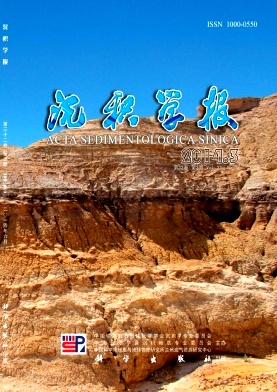Evolution of Intermediate Water in the Northern South China Sea During the Last 6 Million Years: Evidence from Benthic Foraminifera
- Received Date: 2013-03-28
- Rev Recd Date: 2013-09-09
- Publish Date: 2014-06-10
-
Key words:
- benthic foraminifera /
- assemblage composition /
- South China Sea /
- Late Miocene /
- intermediate water
Abstract: In order to investigate the evolution of intermediate water in Shenhu area on the northern slope of the South China Sea (SCS) from Late Miocene, benthic foraminiferal assemblage composition and stable oxygen and carbon isotope values from core SH7B were studied. Factor and cluster statistical analysis were used to perform based on the quantitative census data of benthic foraminiferal fauna with 35 dominance genus or species in 128 samples. Four assemblages were recognized including assemblage of Globocassidulina subglobosa-Stilostomella spp.(Gs-St), Chilostomella mediterranensis-Globobulimina spp.(Cm-Gl), Hoglundina elegans-Pyrgo spp. (He-Py) and Melonis affinis-Pyrgo spp. (Ma-Py). During the warm period and higher eustatic sea level stage from Late Miocene to early Pliocene (5.8~2.8 Ma), benthic foraminiferal assemblage (Gs-St) is stable and relative medium-low nutrient environment and low oxygenated situation in this region. Caused by the current status of global ocean, the relative negative excursion of δ13C values and marked dissolution of carbonate in Core SH7B were also recognized in other marine regions from 5.8~3.79 Ma, which indicate that the low oxygenated situation of intermediate water in the northern slope of the SCS may be controlled by the presence of oxygen-depleted and corrosive pacific intermediate water. From the Early Pliocene 3.79 to 2.8 Ma, the increasing of benthic foraminiferal abundance and aerobic epifaunal species suggests the intensification of the intermediate water circulation and the increasing of oxygen content. Since Late Pliocene 2.4Ma, fluctuating changes of benthic foraminiferal assemblages and stable isotope values indicate medium-high seasonality of surface water productivity and well-oxygenation to oxygen-depleted bottom-water situation. The benthic foraminiferal distribution is mainly controlled by the organic matter flux to the seafloor and the circulation of intermediate water.
| Citation: | Evolution of Intermediate Water in the Northern South China Sea During the Last 6 Million Years: Evidence from Benthic Foraminifera[J]. Acta Sedimentologica Sinica, 2014, 32(3): 527-536. |






 DownLoad:
DownLoad: